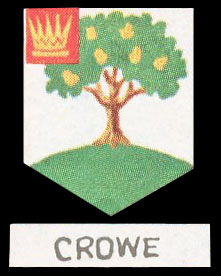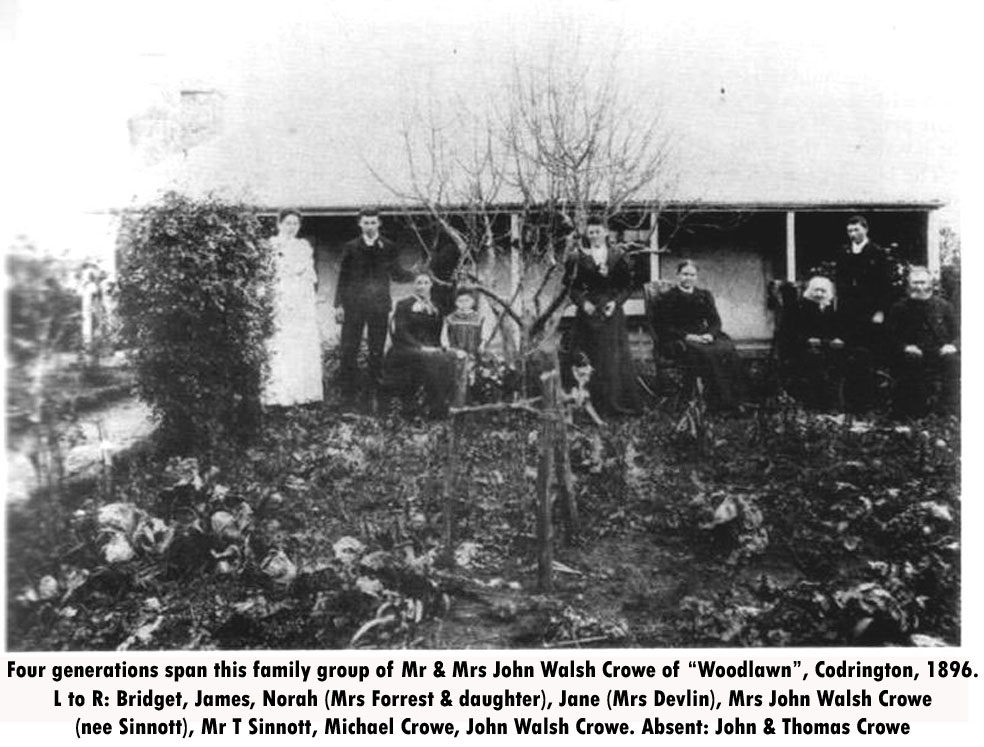

© Updated September 2005
Designed by:
M & L Multimedia Productions
On 7 May, 1858, John married Mary Sinnott at St Patrick's Church, Belfast (Port Fairy) and over the following 18 years they had 9 children, seven of whom survived infancy. Mary was a Wexford girl whose family had arrived in Melbourne in about 1840 and had lived there for some years before settling in Belfast (Port Fairy).
As both Mary and John had been well educated, they wanted all of their children to receive a good Catholic education. Their eldest child, Nora, was sent to live in Yambuk with her maternal grandparents and go to school there. Later on, when there were a number of children at home needing to be educated, a governess came and lived with the family for a number of years and the children received their education at home. When a Catholic school was built in Tyrendarra, the older children were sent there to school. During the week the boys stayed with their father's youngest brother William and the girls boarded with the school teacher. Tom was born in 1866. He was the fourth child born to John and Mary. After finishing school, Tom worked at "Woodlawn" with his father and eventually purchased some land of his own at Tyrendarra East. In 1897, he married Lizzie Dalton, "the girl next door". They had nine children, 8 of whom survived infancy. Mary was born 1900, Jack 1901, Gus 1903, Margaret 1904, Frank 1906, James born 1907, died in infancy, Len 1910, Bill 1913 and Pat 1919.
By 1906, Tom and Lizzie were faced with the problem of educating their children. The nearest Catholic school was then in Yambuk and it was impossible for the children to travel to and from there each day. They decided to sell their farm and shortly afterwards, Tom bought out Assyrian storekeepers, Torbey and Joseph whose premises were located in Wriothesley Street and he and Lizzie subsequently moved into that shop.
Later on, they purchased a store from Mrs Henry Watson in High Street and business was conducted from that premises for the next 70 odd years. After this move, a chance meeting with an unemployed baker, named Rushford, saw Tom installing an oven in his original shop, and employing him. Yambuk then had a Bakery as well. Being a General Store, all sorts of goods could be bought there. Apart from grocery lines, anything from tools, nails and fencing wire to linen, dress material and footwear could be found. Goods purchased from the Store were often paid for "by the barter system" (eggs, butter etc.). The eggs and butter were sold in the store. Any excess eggs were packed, 30 dozen at a time, and together with the excess butter, were shipped off to Melbourne to be sold there. Later on, the excess eggs were sent to the Victorian Egg Board in Warrnambool (about 50 kms or 30 miles away). In the early days, before motor transport, deliveries were made by four horses and a wagon.
There were several delivery routes:-
-almost as far as the Tyrendarra East Primary School and then down towards the sea. It was amazing the number of houses that used to be there.
- St Helens and Codrington.
-towards Port Fairy along the notorious Fingerboard Rd , as far as the " Oakvale " property (on the highway) and back to Yambuk.
On the Tyrendarra run, approximately 19 miles west of Yambuk, at the edge of the thick bush, two horses were unhitched from the wagon and tied up. The wagon and remaining two horses would then go ahead and do all the deliveries. On the return trip, the two now rested horses were again hitched up to the wagon for the return journey home.
